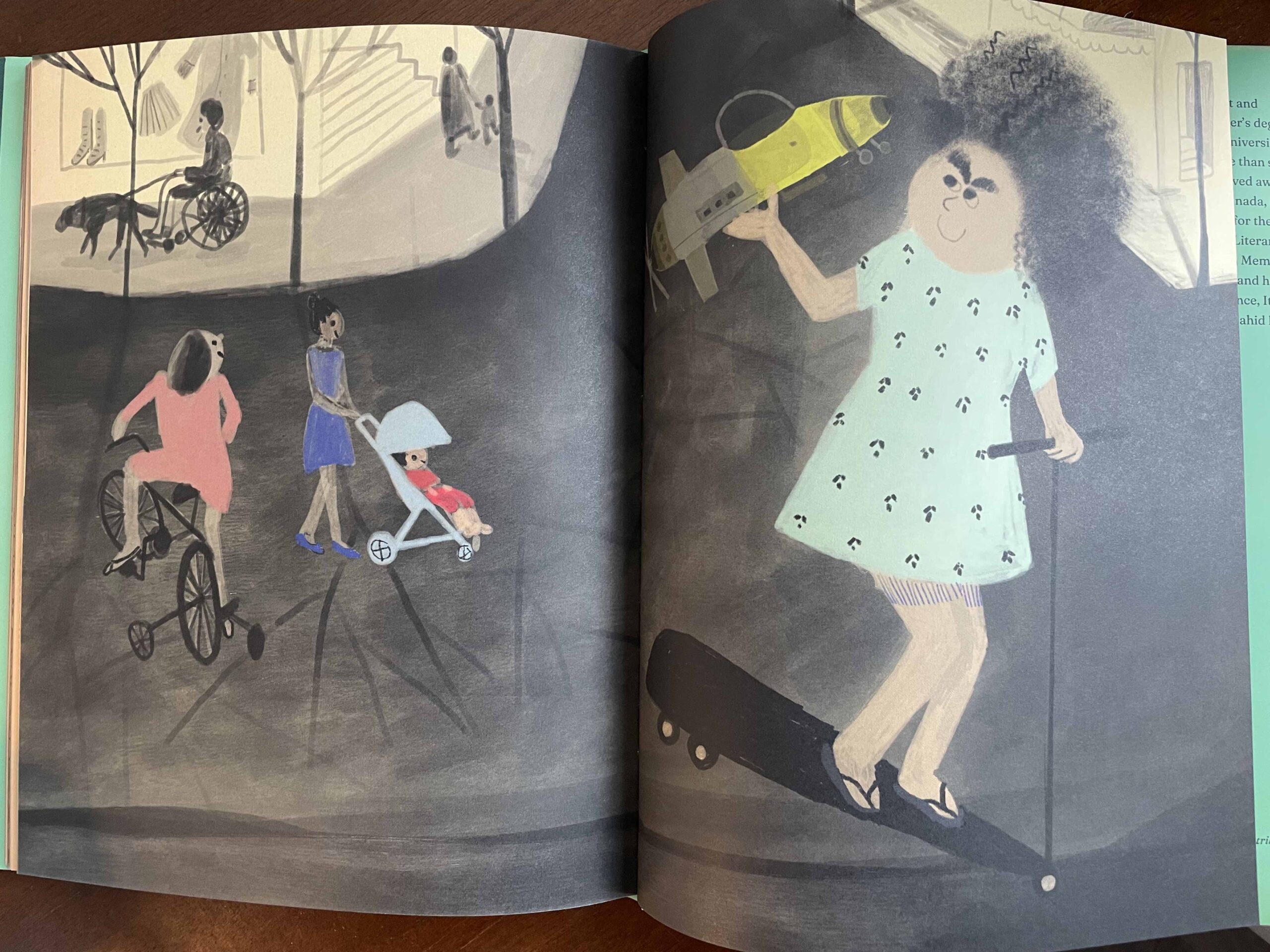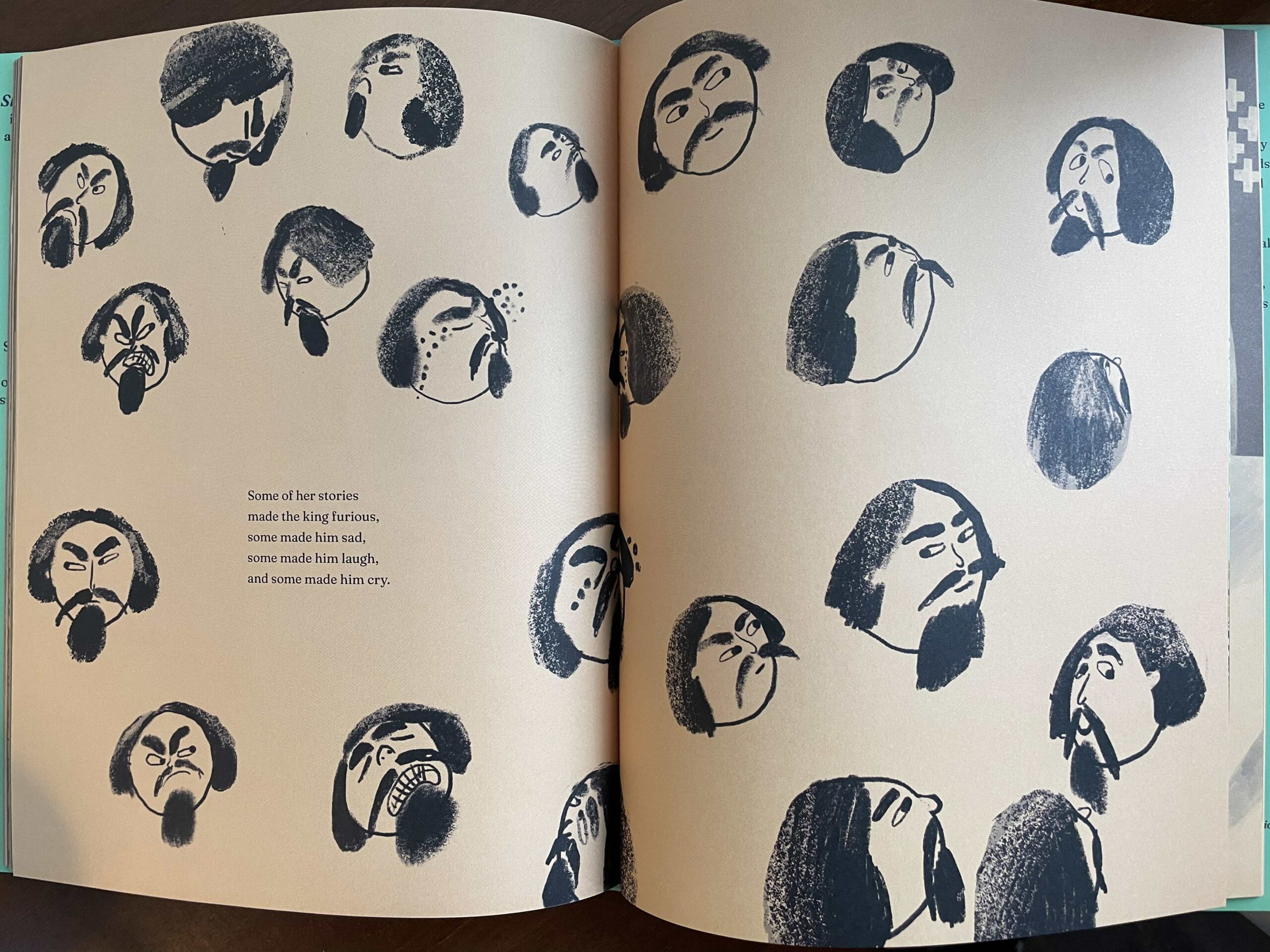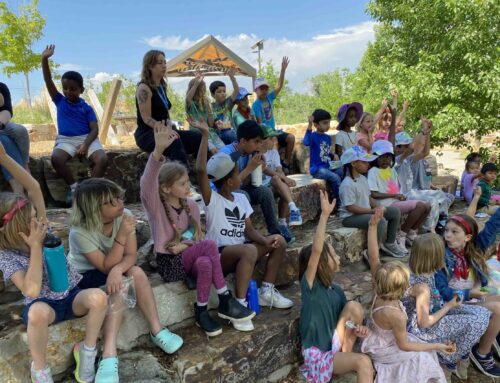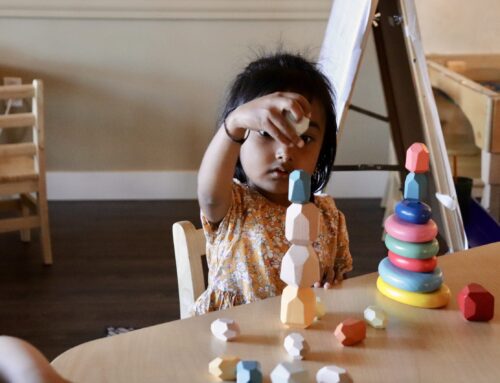
Last week I shared a copy of Shahrzad & The Angry King with each of our classrooms. Written and illustrated by Nahid Kazemi, this re-make of the Scheherazade framing in One Thousand and One Nights is witty and a delight to see and hold in your hands. But more importantly, it is an engaging story about stories. The book opens with our heroine dreaming on a red cushion:
“Once upon a time,
there was a girl names Shahrzad,
who fell in love with stories
long before she could read or write.”
Such a love of stories is more expansive than a passion for reading or writing — it is an opportunity to make sense of the world through many different mediums. Kazemi writes:
“She found stories everywhere —
in peoples’ faces and gestures,
in shops and cafes, and throughout
the city’s streets.”

The willingness and ability to uncover stories everywhere, and through everyday objects and experiences, is a critical component of literacy and imagination. When we think about this in our classrooms, we are always looking for a multiplicity of literacies at play in children’s learning. Whether coming to life through loose parts, engagement with sand trays, drawing, reading curriculum, or open-ended questions that lead to journaling, stories drive our students to search for new understandings and, ultimately, more questions.
This multiplicity is at the heart of inquiry-driven education because it asks students over and over again to dig into multiple perspectives of an event or object or individual. The ability to consider multiple perspectives at once is often marked as a sign of intelligence and the ability to engage with questions in a multitude of ways is a way of practicing this intelligence through critical thinking and, ultimately, reflection.
Our students’ reflections on their storytelling help them to engage more deeply in the mechanics of story-making through workshop models which allow for playful investigation and individual growth.
I wonder if you might take advantage of Shahrzad’s skills in your own time with your kiddos by inviting them to make up stories about the world around them. Make up narratives with the objects within arm’s reach. Make up weird and absurd and funny and poignant tales together. When you do, you’ll have the opportunity to witness your kiddo’s brain in action — you’ll be able to see the ways in which they are making sense of the world around and inside of them.
I hope that by taking this beautiful story and book as inspiration, you’ll be able to inspire a love of storytelling within your own family. You can do it with words, or without them at all. Images and objects and sounds and storyboards and imaginative play can all be modalities for storytelling. Long before your kiddo may read or write, or long after, I hope they will fall in love with stories. I also hope you will fall deeper in love with your kiddo as you witness and share this incredible gift together.







